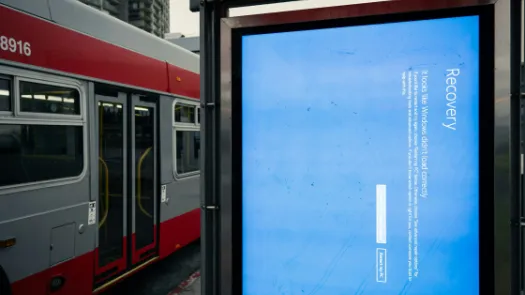A way forward to effectively regulate the trade in surveillance technology

The market for surveillance technologies has expanded so much in recent years that oversight has been totally unable to keep up, which has led to devastating consequences in the lives of human rights defenders in repressive regimes around the world.
According to a new study released today by Privacy International, the Open Technology Institute at the New America Foundation, and Digitale Gesellschaft, international efforts to oversee the trade in surveillance technologies are out-dated and urgently need to be updated in order to keep up in the digital age. Ensuring that export regulations are fit for purpose is a vital part of an overall strategy to ensure the surveillance industry does not continue to trample upon human rights and facilitate internal repression.
Ineffective and outdated controls on these tools allow for authoritarian governments to acquire mass and intrusive spying in an uncontrolled market, enabling them to target political activists, silence opposition voices, suppress the media, and commit human rights abuses.
Uncontrolled Global Surveillance
The premise that export policies and export control systems should reflect the dangers related to the proliferation of surveillance technologies has been recognised by various national, regional, and international bodies. However, without an international agreement in place that commits states to ensuring companies operating within their jurisdiction do not sell surveillance technology to human rights abusers, current efforts to this end have been piecemeal and disparate.
The study, “Uncontrolled Global Surveillance: Updating Export Controls to the Digital Age”, looks at trade regulations related to surveillance technologies in the UK, US, and Germany, three countries with a large share of this market. It also details efforts made at EU level to control the trade in surveillance technologies, and provides an analysis of the key multilateral export control regime related to the industry – the Wassenaar Arrangement – and the implications of recent efforts by the forum to control surveillance technologies.
Exports controls by themselves will not fix the problem, nor should all surveillance technology be subjected to licensing requirements. Government regulation can have a negative impact on technology, innovation, and trade, as demonstrated by the “Crypto Wars” of the 1990’s. As a result, what is needed is targeted and careful policy analysis, with clear and carefully-crafted controls, as well as accompanied by regular updates and feedback loops allowing input from non-governmental sources.
The report is an invaluable source for understanding the current policy and regulatory landscape, and will prove instrumental for civil society, governments, and industry alike as they engage in this debate and explore or advocate for changes to existing regulations.
The UK, US, and Germany national controls
The UK, US, and Germany are three of the most important exporters of surveillance technologies. While attempts to harmonise practices exist, especially between EU member states, each national system is unique and requires separate analysis. The assessment of potential exports to ensure that it does not undermine foreign policy objectives or human rights obligations is carried out by different agencies in each country, and is underpinned by different political priorities and approaches towards industry and trade regulation.
The US system is defined by two pieces of regulation: the International Traffic in Arms Regulations (ITAR) and the Export Administration Regulations (EAR). Its system is currently undergoing a major reform effort under the President’s Export Control Reform Initiative, which aims to build “higher fences around fewer items”. Engaging with and influencing the intra-governmental policymaking process in the US is key. Currently, a limited number of outside experts influence policy developments, mostly export control lawyers, private consultants with previous government experience, and specialized associations.
Of particular interest in the US context are unilateral controls aimed at stemming the proliferation of “Surreptitious Listening” items as part of its foreign policy-based export controls aimed at anti-terrorism.
Similarly to the US, Germany has recently initiated far-reaching reforms of its export controls system, and the report’s section on Germany considers these changes in regard to human rights provisions. It also considers how updates to the German export control system are achieved, and the role of the executive and parliament in implementing changes.
The UK’s system is based on a consolidated list of items that require export licenses and a consolidated list of criteria that these items are then assessed against when a company wants to export them. Items not currently subject to a licensing requirement can be brought under control by either updated lists agreed in multilateral forums or through the imposition of unilateral controls. While the UK Government has recognised the dangers posed by certain surveillance technology, it has emphasised a multilateral route to increased oversight.
EU Controls
The E.U. as an actor in this field is particularly important given the policymaking and legislative role it plays in the field of trade across its member states. It is widely documented that European companies have been responsible for providing much of the surveillance capabilities of authoritarian regimes across Northern Africa and the Middle East in the wake of the Arab Uprising.
Currently, efforts at the EU level to control the trade in surveillance technologies have come from various institutions and policy instruments. EU regulations on dual-use exports, arms exports, sanctions, “catch-all” controls, and general licenses all impact upon surveillance exports.
The Wassenaar Arrangement
In 2013, the relevant existing export controls regime, the Wassenaar Arrangement on Export Controls for Conventional Arms and Dual-Use established two new controls relating to “intrusion software” and “Internet Protocol network surveillance systems”. This was an important first step by the 41 participating states, recognising for the first time the need to subject spying tools used by intelligence agencies and law enforcement to export controls.
However, these changes now need to be implemented by participating states. The recent changes to the Wassenaar Arrangement are only a first step to examine existing controls in the context of the emerging surveillance industry and to update them. As a forum for states to agree which specific technologies should be subject to export control for regional and international security and stability reasons, it does not obligate them to assess the impact of transfers of such goods on human rights. They must therefore also agree on strong commitments to appropriate criteria related to human rights when assessing export license applications for surveillance technologies.
Addressing the gap in understanding
Intrusive and mass spy-gear will continue to have devastating effects upon the fundamental human rights of people across the world unless oversight mechanisms are able to keep up with developments in technology.
The first step is to address the gap and the role export controls can play as part of an overall strategy for stemming the harm caused by the surveillance trade.
Understanding the current landscape in terms of export policy and regulations in regard to surveillance technology is key not just for government authorities, but for the industry itself as well as for civil society.



